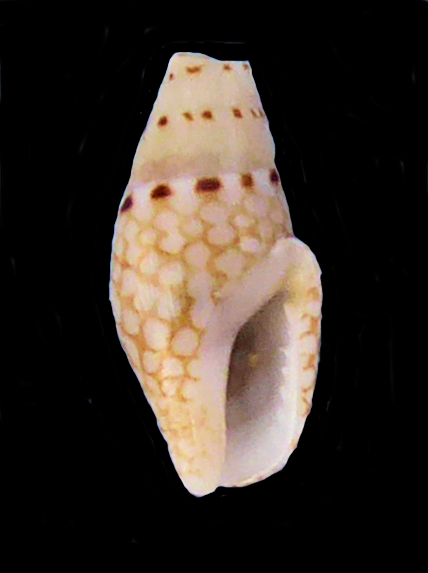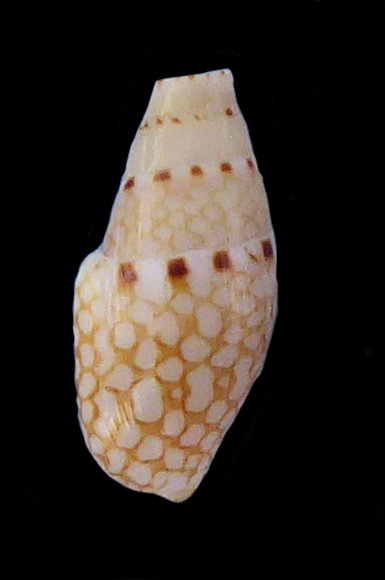Spotted Dove Shell, Mitrella guttata

 Spotted Dove Shell, Mitrella guttata. Shell collected off the beach in the greater Los Cabos area, Baja California Sur, April 2021. Length 1.6 cm (0.6 inches) x 0.7 cm (0.3 inches).
Spotted Dove Shell, Mitrella guttata. Shell collected off the beach in the greater Los Cabos area, Baja California Sur, April 2021. Length 1.6 cm (0.6 inches) x 0.7 cm (0.3 inches).
Spotted Doves are found on and under rocks and large stones. They live intertidally to depths up to 30m (98 feet). In the Eastern Pacific, Spotted Doves range from Magdalena Bay to Peru, including the Cocos and Galapagos Islands. They are found in the lower half of the Gulf of California. World-wide, this species is also be found in the Indo-pacific and the Atlantic Ocean. Such a massive range is unusual in the shell world. Possibly this species may belong to a species complex, which will need to be sorted by DNA analysis, and the species may then be split into new species or subspecies.
Synonyms include Columbella guttata, Mitrella ocelata, and Nitidella guttata.